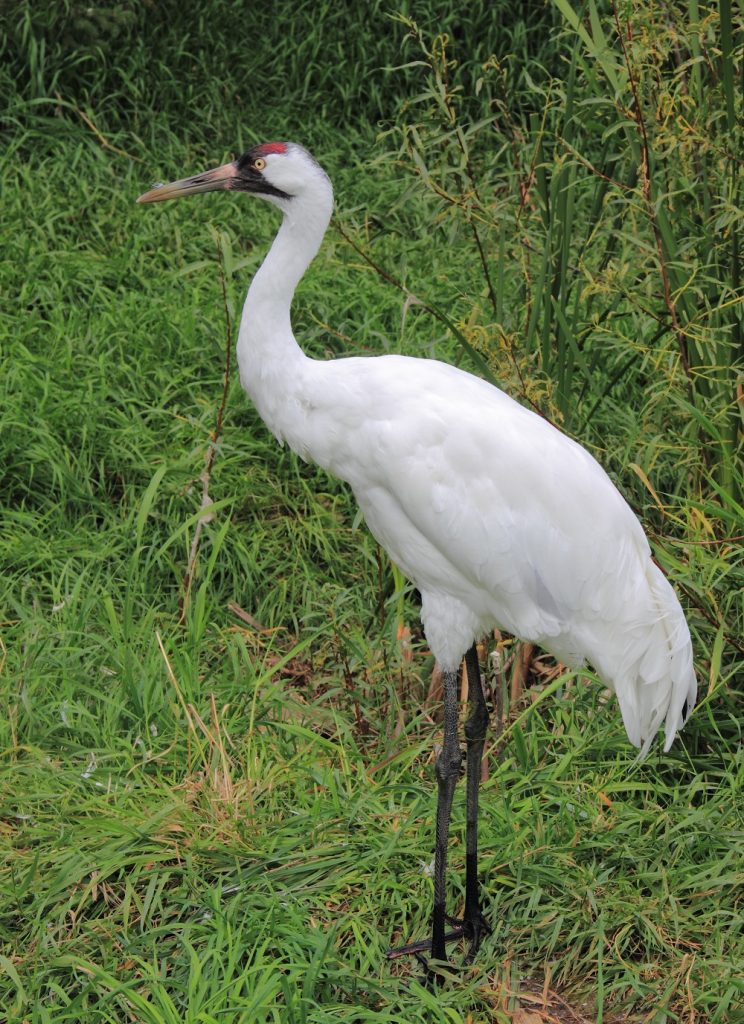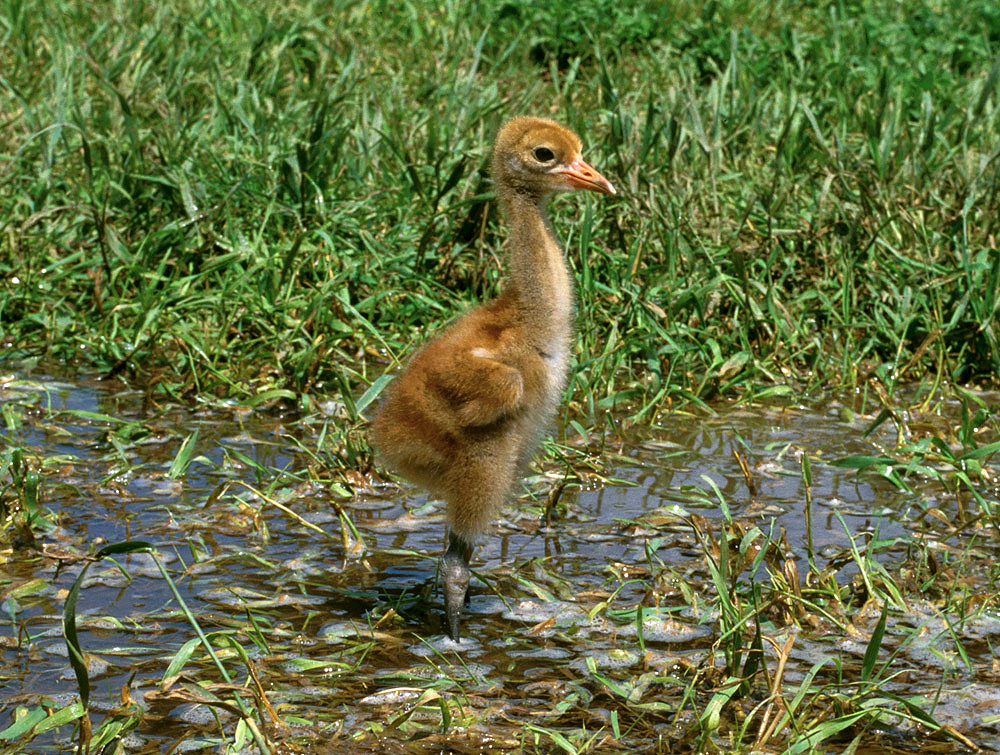Whooping Cranes: Step by Step, Egg by Egg, Towards Recovery
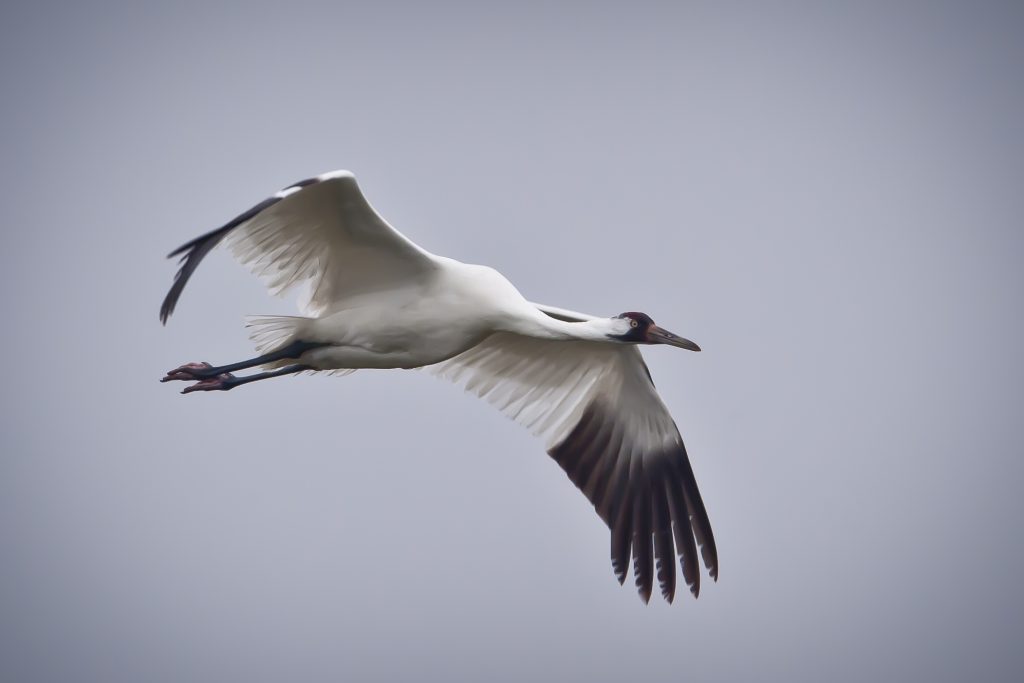
The whooping crane’s black wings tips are visible when it is in flight. JOHN NOLL
BY HIRA SHAH
Wood Buffalo National Park, Canada’s largest national park, stretches across northeastern Alberta and into the Northwest Territories. This park contains a remarkable blend of wetland, forest, and plains and provides a home for some of Alberta’s most unique species, including the whooping crane.
The whooping crane is an iconic species for many reasons. It is the tallest bird in North America, standing 1.5 metres high, and has an impressive wingspan of more than two metres. Its name is derived from its distinct trumpeting call. With black wingtips hidden under stark white feathers and a proud crown of crimson, the whooping crane stands out impressively in its wetland home. But it is perhaps most famous for its near-extinction story.
To the Brink and Back
The whooping crane was once widely distributed across North America, but by the 1940s, hunting and habitat loss had reduced the species to only 21 birds. At this point, Wood Buffalo National Park was the only remaining nesting grounds for whooping cranes, and this flock later became the source of reintroductions to Florida and Louisiana. Wood Buffalo National Park remains the only place in Canada where whooping cranes nest. This flock migrates to the Aransas National Wildlife Refuge in Texas each winter.
The many decades of scientific research, conservation breeding, and recovery management efforts have paid off. The overall crane count across all three populations is now over 600 individuals in the wild. Cross-boundary cooperation between Canada and the United States to support this species is truly an achievement to applaud. However, it’s still too early to call the job done. While the whooping crane’s journey is often referred to as a conservation success story, this bird still has a long way to go before it can be formally downlisted from Endangered to Threatened under Canada’s Species at Risk Act.
It Starts With an Egg
The Wilder Institute has been involved in whooping crane conservation since 1992, leading Canada’s only conservation breeding program for this species. Cranes bred at the Wilder Institute are released into U.S. whooping crane populations by their partners at the International Crane Foundation and the Louisiana Department of Wildlife and Fisheries. In mid-April, the Animal Care, Health and Welfare team at the Wilder Institute’s conservation breeding facility begins to keep an eye out for cranes showing signs of incubating. Whooping crane parental care involves both male and female cranes taking turns sitting on the nest to incubate the eggs. The team uses a remote camera system to confirm whether an egg has been successfully laid so as to not disturb the potential new parents. Whooping crane eggs are olive-coloured with brown splotches and are approximately the size and shape of a large avocado. For the next 29–31 days, the parents will have their feathers full with egg-sitting duties.
In the wild, whooping cranes normally lay and attempt to hatch two eggs. However, the second egg is not laid until a couple days after the first. To encourage additional egg laying from captive breeding pairs, the Wilder Institute team removes the first egg to be incubated by a whooping crane pair that did not successfully breed. This helps maximize reproduction.
During the month of incubation, the cranes and their eggs are inspected daily using the remote video system. Eventually, signs that the chicks are ready to break through their eggs become evident. With eager beaks drilling away at the outer shell, it’s an arduous process that can take up to 72 hours. The team is on standby to support only if needed.
Welcome to the World
After finally making their entrance into the world, the whooping crane chicks are welcomed into their new habitat at the Wilder Institute’s conservation breeding facility. Strikingly dissimilar to their parents, these fluffy chicks feature rusty orange feathers that they will slowly moult over the next couple of months.
The chicks receive expert care at the breeding facility, including welfare checks, veterinary exams, and a crane-catered diet; all part of the daily routine to ensure healthy body condition. The future of these chicks won’t be decided until later. Some will be released to the wild, while others will remain at the facility as part of the breeding group.
Conservation breeding involves a complex set of factors, with genetics being a key factor. Before any recommendations for future breeding or release are made, the team determines what will maximize genetic diversity for the whooping crane population under human care. This involves genetic analysis as well as consultation with partners across North America to see where these valuable genes are most needed.
Hatching Answers Through Science
Cranes under human care have lower reproductive success than wild cranes. Poor fertility and low hatch rates result in fewer individuals available for reintroduction to the wild. The cause of poor reproductive success has caught the attention of Wilder Institute researchers — why do some whooping crane eggs fail to hatch? How can the conservation breeding program better mimic wild conditions for hatching?
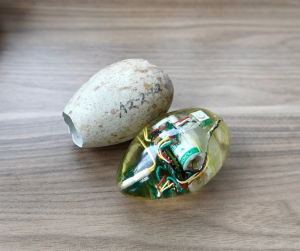
Data-logging eggs were used to study incubation parameters under three different rearing conditions to determine the optimal approach. WILDER INSTITUTE
To answer these questions, the Wilder Institute collaborated with the International Crane Foundation and the Patuxent Wildlife Research Centre to test eggs in various incubation environments.1 However, these weren’t ordinary whooping crane eggs. They were artificial data-logging eggs that recorded temperature, humidity, and egg-turning rates by parent cranes. These “smart” eggs were placed in three different environments: whooping crane nests, sandhill crane nests, and artificial incubators.
The study found that eggs incubated by sandhill cranes had the highest hatch rate, while certain artificial incubators had the lowest. Thanks to this research, recommendations were made for improving the conservation breeding program. The artificial incubators could better mimic natural whooping crane incubation by adjusting temperature and having more egg-turning events. Conservation requires continuous research to best support species at risk.
Leaving the Nest
There are many challenges to overcome before a whooping crane is ready for its wild home, but the biggest challenge is surviving in the wild. Once released into the wild, the whooping cranes are responsible for finding their own food, protecting themselves against predators, and successfully surviving the winter months. These resilient birds are proving that they’re not interested in going extinct.
With Alberta hosting such an important breeding ground for whooping cranes, it’s clear that we have a significant role to play in their conservation. The more we can advocate for this unique bird and its habitat, the closer we are to making its conservation success story a reality.
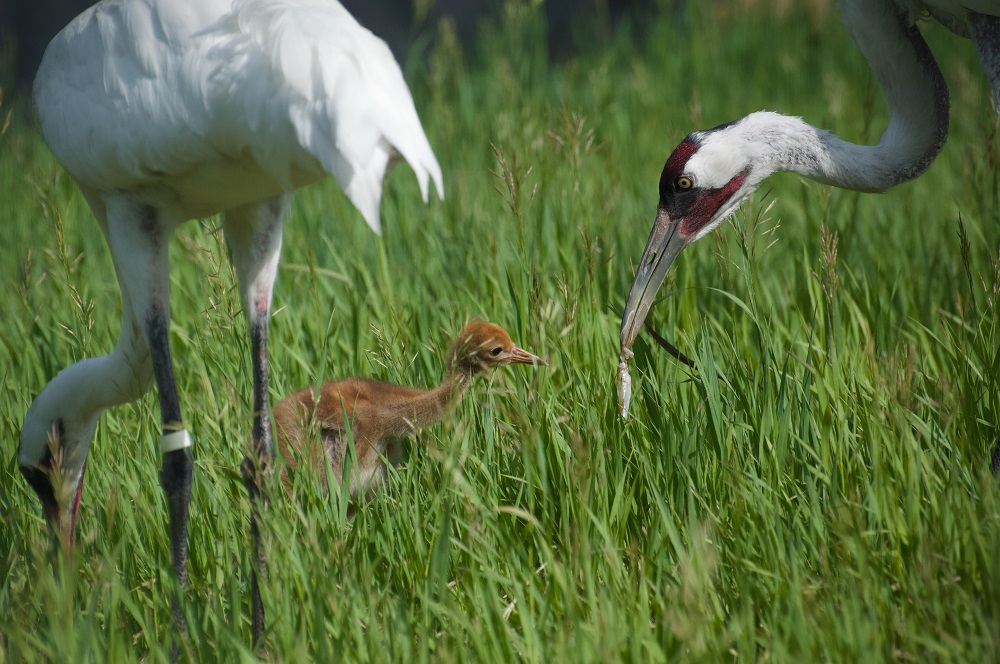
Whooping crane chick and adults at the Wilder Institute’s conservation breeding facility. WILDER INSTITUTE
Reference
- Edwards, H.A., S.J. Converse, K.D. Swan, and A. Moehrenschlager (2022). Trading off hatching success and cost in the captive breeding of Whooping Cranes. Animal Conservation., 25: 101-109.
Hira Shah is a science communications specialist with a focus on the field of conservation. She is currently the Conservation Communications Strategist with the Wilder Institute/Calgary Zoo.
This article originally ran in Nature Alberta Magazine – Fall 2023.

